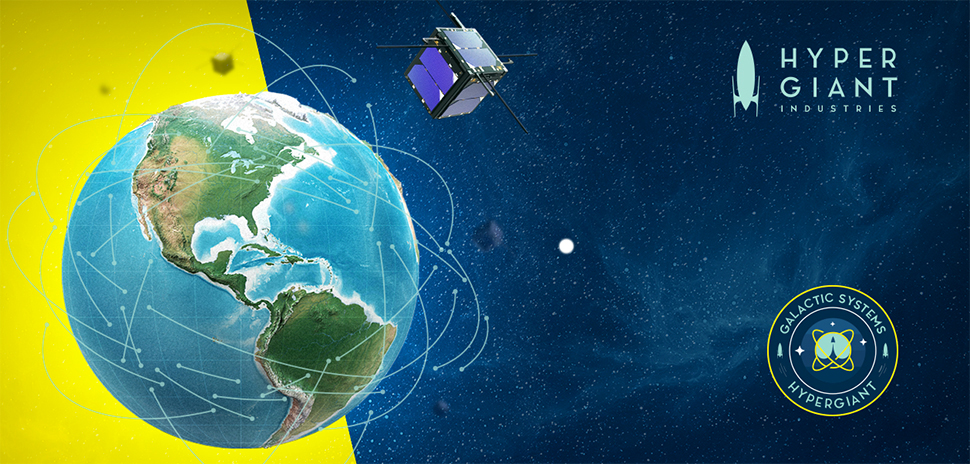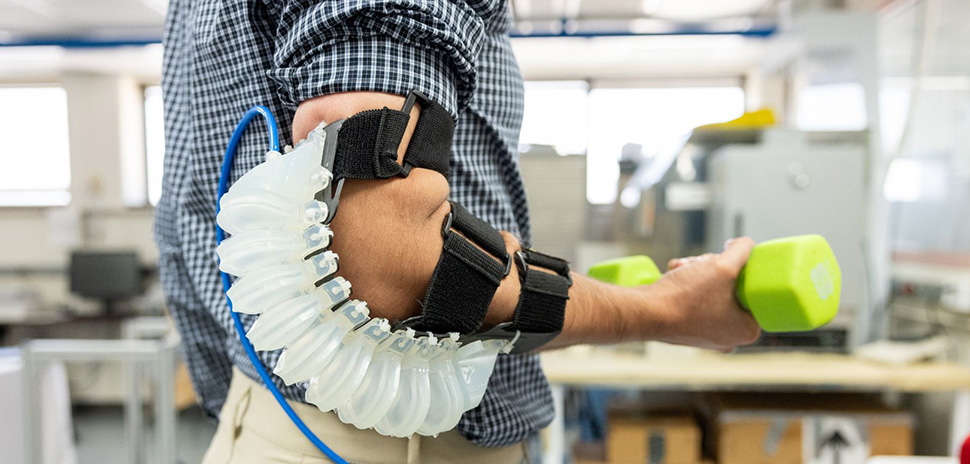Hypergiant Industries, a Texas-based artificial intelligence industrial complex with outposts in Dallas, Austin, and Houston, announced the launch of its latest division—Hypergiant Galactic Systems—which will focus on AI-driven aerospace and astronautic software and hardware for the space industry.
The launch news included Hypergiant’s acquisition of Satellite & Extraterrestrial Operations & Procedures (SEOPS), a Houston-based satellite deployment and services provider offering proprietary launch and deployment systems for the CubeSat and MicroSat markets.
Hypergiant, led by Dallas-based CEO Ben Lamm, came out of stealth a year ago with a three-prong approach to the AI marketplace: Hypergiant Space-Age Solutions for commercial applications of AI for clients like TGI Fridays, Hypergiant Applied Sciences for scientific applications, and Hypergiant Ventures for funding AI startups.
Last November, it added Hypergiant Sensory Sciences, a separate company led by CEO Dave Copps, but part of the Hypergiant syndicate. Sensory Sciences uses spatial computing to bring AI to sensory data such as camera footage and other IoT sensory devices.
Galactic Systems is the latest addition to the rapidly growing startup.
For those paying attention, Ben Lamm shared his thoughts on “entrepreneurs in space” in a blog post on entrepreneur.com earlier this month. Lamm writes that Musk shouldn’t have Mars all to himself, and even notes SEOPS as an example of a way to launch satellites with near regularity.

[Photo: John Davidson]
With the SEOPS acquisition, Hypergiant Galactic Systems comes out of the gate with customers in defense, government, and academic institutions. Its client list includes heavy hitters in aerospace, including NASA, DARPA, and Northrop Grumman. Through a user agreement with the Center for the Advancement of Science in Space (CASIS), Hypergiant Galactic Systems also has allocation on all ISS (International Space Station) visiting vehicles, such as SpaceX Dragon and Northrop Grumman Cygnus.
SEOPS is led by CEO Chad Brinkley and CTO Michael Johnson, who will both continue in their respective roles at Hypergiant SEOPS, a subsidiary of Hypergiant Galactic Systems.
“In joining Hypergiant Galactic Systems we have gained access to invaluable resources in artificial intelligence, machine learning, intelligent sensors, and more,” said Chad Brinkley, CEO and co-founder of SEOPS, in a statement. “As we leverage these technologies to enhance our offerings and develop entirely new services, we’re confident our customers will be delighted by the new value created through data and machine learning. Today is a great day for space science.”
Galactic Systems will be filling an important niche in the space industry. A Hypergiant statement explained that the “dirty little secret” of satellites is the value isn’t in simply getting them into space, it’s what they send back, which amounts to a “goldmine of data not just about our universe, but about our own Earth.”
Galactic Systems will bring AI and machine learning to this trove of data from space, and bring intelligence to every step of the process through outcomes-based solutions.
“Artificial intelligence has the potential to make virtually every machine more efficient,” said Bill Nye, CEO of the Planetary Society, in a statement. “The same is especially true of spacecraft and all the ground systems required to support them. We wish Hypergiant Galactic Systems and SEOPS the very best as they help us accelerate space exploration beyond what was possible even a decade ago.”
In a Q+A with Lamm, Dallas Innovates delves deeper into Hypergiant Galactic Systems, what AI in space will look like, and how the new division is going to fit into the overarching Hypergiant Industries.
How does Hypergiant Galactic fit into the overall Hypergiant Industries ecosystem?
Hypergiant Galactic Systems is a division of Hypergiant Industries, meaning that we will be working collaboratively across Hypergiant Industries where appropriate in regards to technology, research, and commercialization.
Paired with A.I. driven platform technologies from our Space Age Solutions division and cutting-edge computer vision and machine perception R&D from Hypergiant Sensory Sciences division, Hypergiant Galactic Systems immediately comprises a vertically-integrated geospatial intelligence and infrastructure capability for the Fortune 500 and large government agencies.
Was the SEOPS acquisition the driving force behind launching Galactic?
Hypergiant Galactic Systems has been developing for a while, but the SEOPS acquisition is definitely an impetus to launch. In a lot of ways, they are representative of our broader vision. SEOPS may not only be the only asset in Galactic at this time. Hypergiant SEOPS will operate as a subsidiary of Hypergiant Galactic Systems. We will be announcing more on this front soon.
What will bringing AI and data intelligence mean to space technology?
I would actually re-order your question—what will bringing space technology mean to AI and data intelligence? Our vision is for Hypergiant to use AI to solve some of humanity’s biggest problems and unlock our greatest opportunities. To accomplish this, gaining access to data is key, and the quality of that data is critical. We have done an incredible job cultivating an arsenal of data from being on earth—truly, we and the world around are all just data—and looking around.
What space affords us is the ability to look back at Earth—an entirely new point of view that holds invaluable insights. As an AI industrial complex, we bring the ability to not only develop the hardware through our R&D capabilities but apply the machine learning and AI software that has already been proven across industries. We’re creating the entire value chain of space, and from it, creating immeasurable value for our customers in the public and private sectors.
That being said, the real benefactors from the intersection of space and AI are industries like oil and gas, energy, defense, and more.
For example, in agriculture, we have the ability to not only track a yield retroactively but layer ground data and satellite data to predict growth, determine where is best to plant, when to harvest, and determine the efficacy of fertilizer and pesticides. Right now, Landsat and Sentinel (both government-backed satellite imagery sources) provide a lot of the agriculture-related models, but we’re missing an important layer of intelligent to merge the rich sources of agdata that we are creating every day.
However, the quality of these insights and the ability to extract truly transformative information from these images is entirely dependent on the quality of the AI you have analyzing this data. Consider the fact that satellites capture thousands of images every day. This data is too much for any human team. In agriculture alone, AI unlocks the ability to not only track a yield retroactively but layer data to predict growth, determine where is bets to plant, when to harvest, etc.
What does this look like in-practice—either hypothetical, or actual results from a pilot program?
I’ve already given a few examples above, but to translate to another industry, oil and gas is another sector where satellite imagery, when applied intelligently, can be both preventative in terms of disasters and proactive in creating more upside for business. To paint a specific picture, fires are both prevalent and especially dangers in oil and gas. While the human eye can help detect things, we are limited by how far we can see, and in the case of a disaster, in what conditions we can see well.
The ability to not only potentially predict fires based on weather patterns and other factors can save lives and trillions of dollars, and is an excellent example of satellite usage, but vision on the ground is also important for a holistic understanding of a situation. By combining satellite imagery with on-the-ground camera intelligence, companies have more detailed insight than ever before.
You are rapidly expanding into a number of different areas. Are there more announcements to come about Hypergiant divisions in even more spaces/markets?
You have excellent foresight. While Hypergiant Galactic Systems will be our primary division devoted to the space sector, and capitalizing on space as an API, you should definitely expect more announcements. We are pretty tight lipped on future plans.
As I mention above, SEOPS is part of a bigger vision of Galactic, in creating the value chain of space, and of course, of Hypergiant Industries more broadly. We are built to not just work with satellite imagery, but layer that data as part of a far more complex pipeline that includes input from a multitude of other sources. This allows more of a predictive model as opposed to simple change detection. While other companies outsource or cobble together their AI to serve their imagery, our imagery serves our AI. That makes a huge difference because the quality of the AI determines the quality of your insights or intelligence.
Are there any plans for opening a dedicated Hypergiant Dallas office?
Hypergiant Space Age Solutions already has employees in Dallas as well as Hypergiant Sensory Sciences being based in Dallas. Our Dallas teams have been working out of the DEC and Capital Factory but are close to announcing some changes to that. We will share more soon.
Is there anything about the Galactic news, or Hypergiant overall, that Dallas Innovates readers should know?
I’d just like to reiterate that we are so excited to announce Galactic Systems to the world. The news marks a major step in our goal to help mankind expand its horizon into the next frontier through orbital AI and deliver on the promises of space.
![]()
Get on the list.
Dallas Innovates, every day.
Sign up to keep your eye on what’s new and next in Dallas-Fort Worth, every day.































